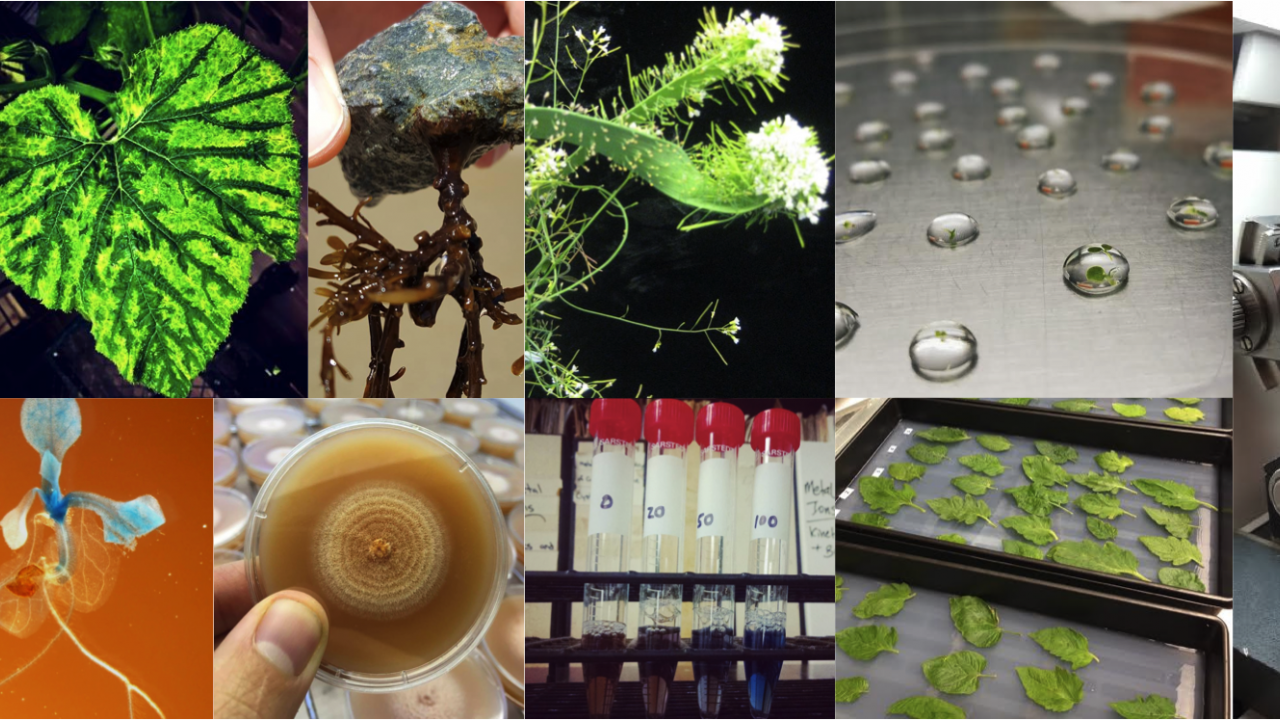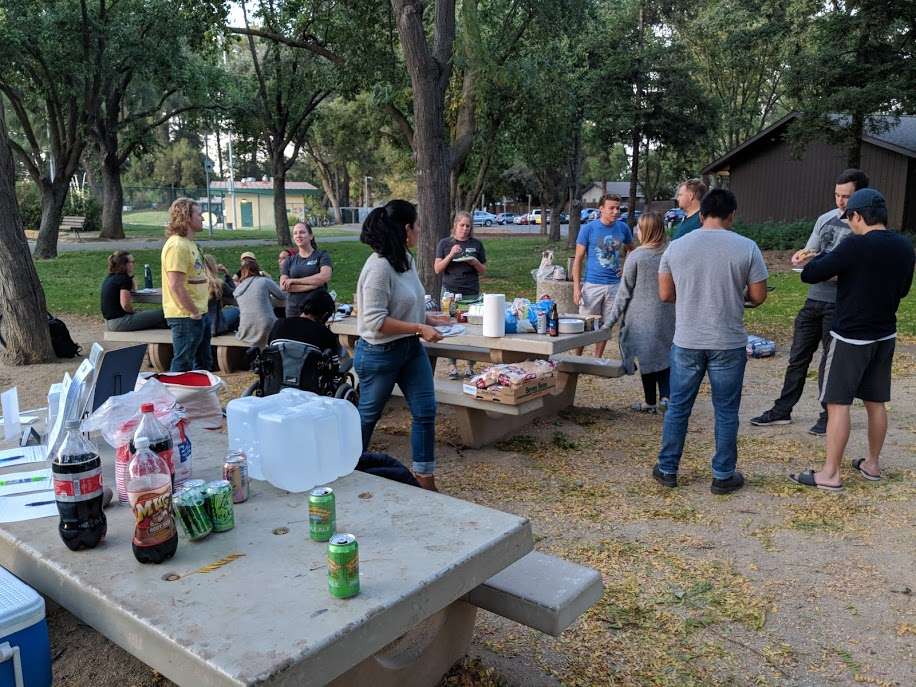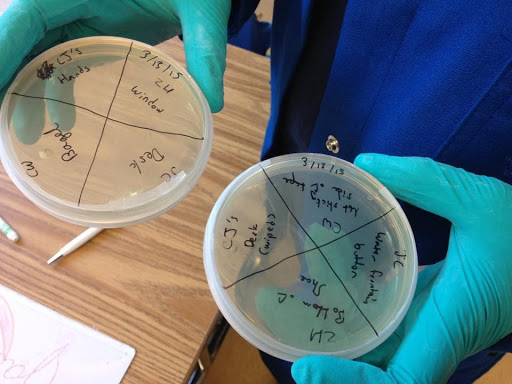
Scicomm 101: A Beginner’s Guide to Science Communication
As scientists, we constantly engage in science communication, but have you taken a moment to think about what that means and how you could improve your communication? Science Says hosted a SciComm 101 presentation in lieu of our annual kick-off barbecue (thanks, COVID-19) to explore some science communication background, basics, and careers.

When we talk about science communication (scicomm), we are referring to the practice of communicating science-related topics to non-experts, usually in the fields of science, technology, engineering and math (STEM). The primary goal of scicomm is to engage and educate the public through outreach activities. Non-scientists and everyday citizens need to be informed and educated about the scientific issues at hand in order to be fully informed about the world they live in—climate change, vaccines, and COVID-19 are some current issues with a big impact on our lives. The average person only experiences scientific engagement in school and is often met with challenges that prevent them from continued engagement; they may have the understanding that there is only one way into STEM fields successfully, even though this is an inaccurate assumption. This gate-keeping negatively impacts the scientific literacy of the public who vote on policies affected by science like healthcare and environmental protections. Thus, science communication is imperative to improving the accessibility of science to the public.
What does science communication look like?
Who doesn’t like lists? This definitely isn’t an exhaustive one, but we just wanted to give you some examples of ways that you can communicate science. These are just some ideas so that you can think about a method that works best for you!
- Digital media (videos, podcasts)
 There are a myriad of ways to approach digital media. In the case of podcasts, for example, some graduate students take the time to interview professors about their research in a way that is engaging to their listeners. This requires a little bit of experience with audio editing, but it can be a useful skill to learn. For an example of a graduate student-run podcast, check out SciComm@UCR’s Beyond the Bench!
There are a myriad of ways to approach digital media. In the case of podcasts, for example, some graduate students take the time to interview professors about their research in a way that is engaging to their listeners. This requires a little bit of experience with audio editing, but it can be a useful skill to learn. For an example of a graduate student-run podcast, check out SciComm@UCR’s Beyond the Bench!
Other graduate students hone their skills in video creation and editing, such as on the Science Says Youtube channel. Here, you can talk about specific topics that you are interested in, or make videos debunking some myths about the field you study. You can even record yourself doing an experiment, either one for kids or a more advanced one for high school students interested in understanding research.
- Writing (books, blogs, journalists, press releases…)
Traditionally, some scientists have written books about their work or their experiences as a scientist. These are usually aimed at the general public, with the intent to tell a story about their experiences. One example of this is Sy Montgomery’s The Soul of an Octopus: A Surprising Exploration into the Wonder of Consciousness, in which she talks about her appreciation for octopuses (not octopi!). In our book club we talk about how she really paints a picture of how octopuses act and make connections with people, even though their experiences are vastly different than that of humans. Scientists don’t have to write long-form pieces either—many scientists write short-form pieces such as blog posts, news articles, and press releases featuring recent research highlights.
- Outreach (festivals, pubs)
When we think of outreach, many of us think of schools—like a classroom setting. But a lot of the outreach that we do can vary a lot! Science Says (at least, before COVID-19,) frequently goes to Farmer’s Markets to table and talk one-on-one with the public about things like GMOs, agriculture, and other hot-button scientific topics. Science cafés are becoming more popular, especially at bars, where you can discuss science with adults in a casual setting. Check out this list of science cafés near Davis.
- Education (formal/informal) (aka traditional science education in schools vs. museums, camps, other non-school educational settings)

While this can also fall under outreach, some science communication can be dedicated to education itself such as designing classroom lesson plans about exploring the world around them in a scientific manner. Some classrooms will allow graduate students to demonstrate experiments or talk to students about science; there are even opportunities for field trips. It depends on what kind of setting you work best in!
- Science policy (pitching to and advising policy-makers)
Not surprisingly, many politicians don’t keep up with research. There is a new wave of graduate students interested in science policy, which may involve them running for office or becoming an adviser to politicians at the local, state, or national level.The goal of science communication in this realm is to help politicians make decisions based on evidence from scientific studies.
- Social media
Twitter, Instagram, Facebook, and even TikTok are quickly becoming platforms for scientists to talk about their research to a very wide audience. Some creative scientists post their artwork or microscopy images on Instagram. Others use TikTok to make short, entertaining videos about their research or even what it’s like to be a scientist. These platforms are a unique challenge for a scientist that is interested in science communication—how can you condense the information you want to convey into less than 280 characters? How do you visualize your research? How do you phrase your work in a way that everyone, ESPECIALLY non-experts, can understand?
Most importantly, you use your science communication skills anytime you talk about science, even with other scientists! Honing your scicomm skills is essential for any researcher. Good communication is critical to giving engaging talks, writing scientific articles, and networking with other scientists.
Who does science communication?
As a scientist, you do! Whenever you are talking about science, even to fellow scientists, you are engaging in science communication.
Where do science communicators work?
There are a myriad of scicomm careers so here’s just a sample of them. As a note, many scicomm careers involve lots of written communication so this is a valuable skill you can build with our workshops and blogs. Many of these careers integrate several of the different types of science communication discussed above (writing, social media, digital media, public speaking). Here are just a few examples of scicomm careers:
- Academia: professors who incorporate scicomm into their work, news and media departments, colleges and institutes within a university with communications staff
- Journalism: freelance and full-time writers
- Informal education (museums, nature centers, etc): educators, docents, exhibit curators, communications and outreach directors
- Formal education: Science teachers and college professors or lecturers
- Other science writing: script writers for TV, radio, movies, podcasts; book authors
- Science policy: state and national level as staff member for a legislator, think tanks focused on science-informed policy and research
- Industry: science writers, digital communications, technical writers
- Publishing: academic journals
- Government organizations based on science (NASA, USGS, NIH, National Labs, etc)
How do you launch a science communication career?
Networking is a huge part of developing a scicomm career. This can be done through professional networks like CapSciComm or by attending conferences like Science Talk and the National Association of Science Writers’ (NASW) annual conference. Networking allows you to develop relationships and contacts, and puts you on the radar for opportunities. You may also connect with professionals you want to conduct an informational interview with to learn more about a particular career and necessary skills.
Finally, build a portfolio to demonstrate your work. You can create your own free website through Wix or similar sources to curate your science writing or art; if you’re more interested in a digital career, make a YouTube channel or a podcast. Be sure to broadcast your portfolio and work on professional social media, whether that’s LinkedIn or your professional Twitter account.
Science communication basics
There are many ways to prepare for a science communication event, so we shared some of our favorite tools and tips for monitoring our use of technical jargon and developing relatable and understandable talks or presentations. Identify which areas of scicomm you want to work on this year by watching Mary’s recorded portion below and keep an eye out for future Science Says workshops and events that will help you hone and polish that skill!
You can find all these resources and more on our resources page.
How Science Says can help with science communication
We at Science Says offer a variety of opportunities to build and practice your scicomm skills. From workshops to invited speakers, we host events to build skills like storytelling, writing and digital science communication. We also extend opportunities to practice scicomm through our various blogs, our public science book club and different outreach events. If you’re interested in starting your scicomm career, reach out to us at davissciencesays@gmail.com to get involved in planning an event, writing a blog, or brainstorming creative ways to engage the public especially in the current Zoom climate. Happy communicating!
Science Says is a community of UC Davis graduate students, postdocs and early career scientists dedicated to making scientific research interesting, relevant and accessible to everyone. For more content, follow us on Twitter @SciSays.

Comments